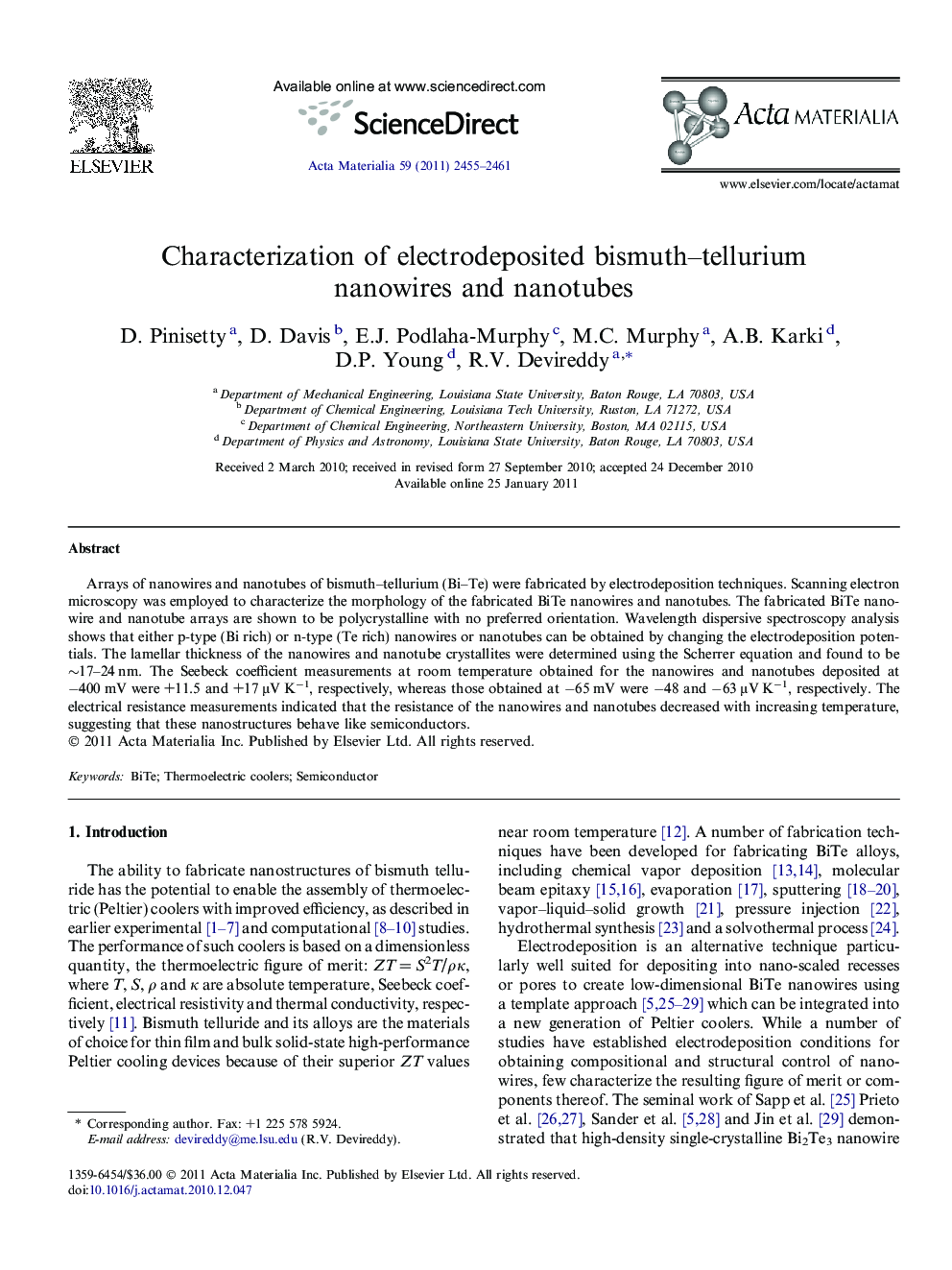| Article ID | Journal | Published Year | Pages | File Type |
|---|---|---|---|---|
| 1447237 | Acta Materialia | 2011 | 7 Pages |
Arrays of nanowires and nanotubes of bismuth–tellurium (Bi–Te) were fabricated by electrodeposition techniques. Scanning electron microscopy was employed to characterize the morphology of the fabricated BiTe nanowires and nanotubes. The fabricated BiTe nanowire and nanotube arrays are shown to be polycrystalline with no preferred orientation. Wavelength dispersive spectroscopy analysis shows that either p-type (Bi rich) or n-type (Te rich) nanowires or nanotubes can be obtained by changing the electrodeposition potentials. The lamellar thickness of the nanowires and nanotube crystallites were determined using the Scherrer equation and found to be ∼17–24 nm. The Seebeck coefficient measurements at room temperature obtained for the nanowires and nanotubes deposited at −400 mV were +11.5 and +17 μV K−1, respectively, whereas those obtained at −65 mV were −48 and −63 μV K−1, respectively. The electrical resistance measurements indicated that the resistance of the nanowires and nanotubes decreased with increasing temperature, suggesting that these nanostructures behave like semiconductors.
